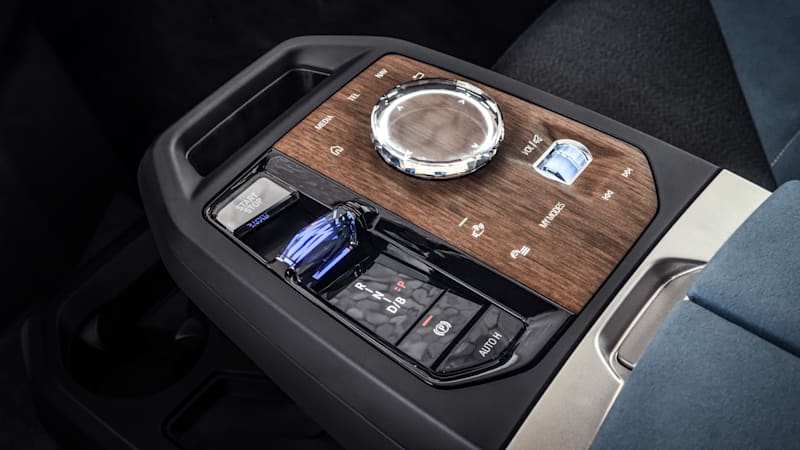2023 Toyota Prius Review: It’s not just about sky-high MPG anymore

[ad_1]
Pros: Excellent fuel economy; cool looks; optional all wheel drive; quick for a hybrid; good interior storage
Cons: Small cargo area; gauges may be hard to see; tech can frustrate
Why yes, the car you see up there is a 2023 Toyota Prius. Looks good, doesn’t it? And not just “looks better than the old one,” cause that’s an extremely low bar, but legitimately good. Cool even. We don’t usually discuss the merits of car design since it’s so reliant on personal preference, but in this case, it’s such a major part of the new Prius story. Not only will you save a bunch on gas, but you no longer have to drive something that looks dorky (or worse) to do it.
Once again, the Prius is available in regular and plug-in hybrid Prius Prime versions, with the regular offering all-wheel drive. That’s rare for an eco-oriented car at this price range, even those marketed as crossovers like the Kia Niro and Chevy Bolt EUV. Fuel economy for the regular Prius is basically the same as before (between 49 and 57 mpg combined depending on trim level), but a serious increase in power has dramatically improved Prius acceleration. The impact is even greater in the Prime plug-in hybrid, which is not only massively quicker than the old one (0-60 mph in 6.6 seconds versus a slug-like 10.2), but genuinely quick, period. It has twice as much electric range, too, with either 44 or 39 miles depending on trim.
At the same time, the new Prius is far better to drive than before, with more responsive steering, a more composed suspension and quieter, smoother operation of its hybrid system. The interior is also more conventional in terms of control and display placement, and Material quality has improved. It’s not quite as spacious, especially in the cargo area, but in general, this is such a massively superior car from both an objective and subjective perspective that it deserves far more attention from any car buyer looking to save as much gas as possible without going fully electric.
Interior & Technology | Passenger & Cargo Space | Performance & fuel economy
What it’s like to drive | Pricing & Trim Levels | Crash Ratings & Safety Features
What’s new for 2023?
The Prius is all-new for 2023 with the exception of its underlying platform. Check out the video above to dig deeper.
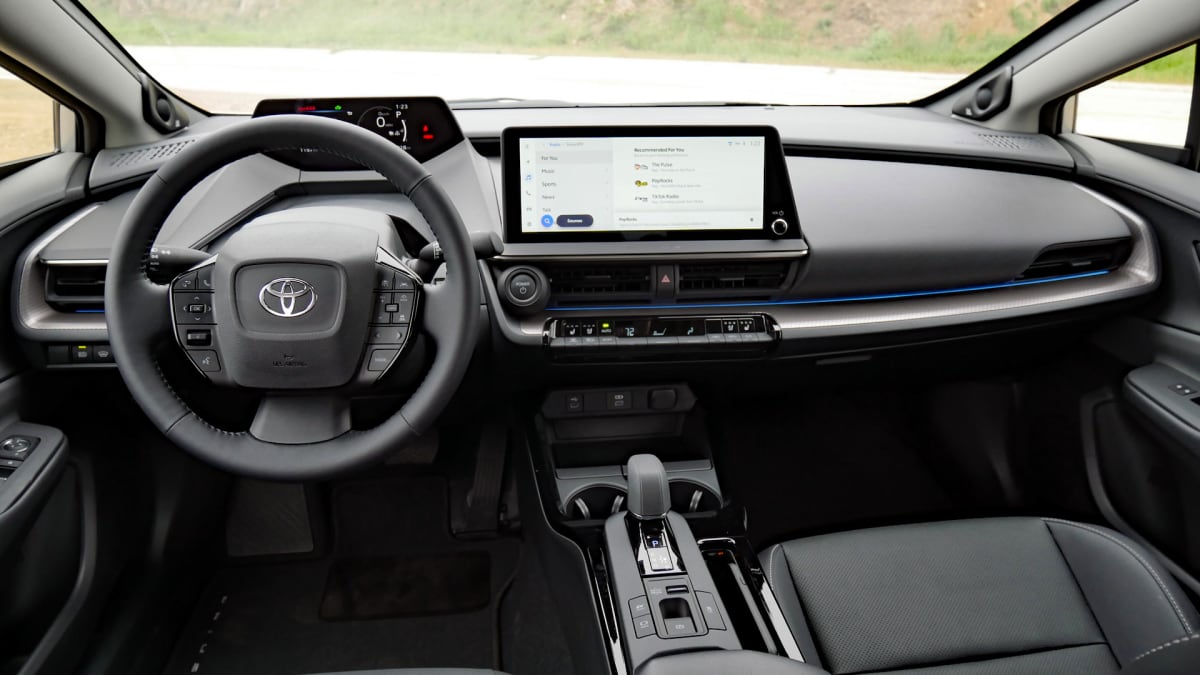
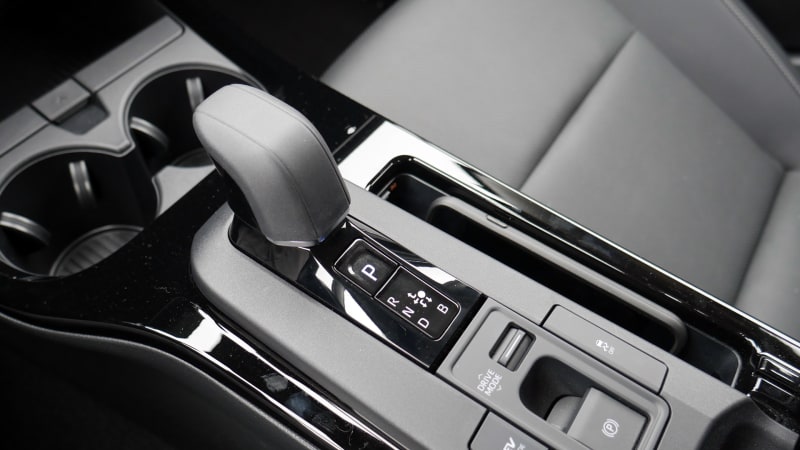
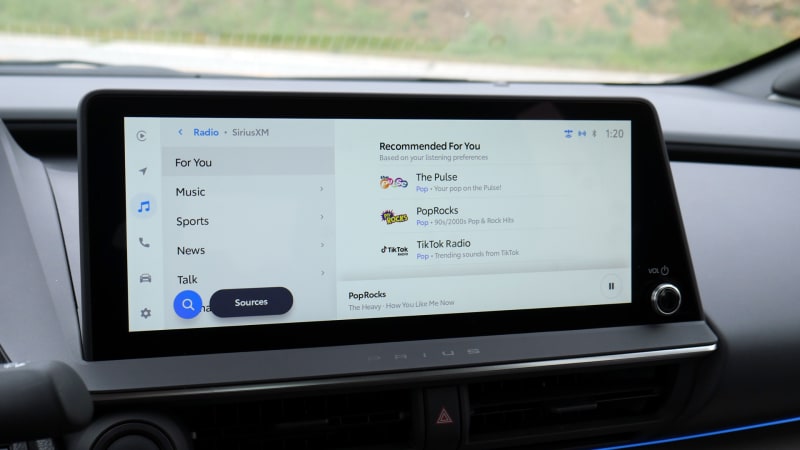
What are the Prius interior and in-car technology like?
Those coming from a previous Prius generation are bound to find things have moved around a bit inside: The shifter is now on the center console and the gauges are directly in front of the driver. For those coming from any other car, you’ll find the new Prius refreshingly normal. That goes for both functionality and pearance, but in terms of the latter, it’s an attractive design that doesn’t lose itself to its tech elements. Materials quality is improved, with above-average materials for eco-oriented cars in this price range. The center console also offers thoughtful storage: big cupholders, a clever vertically oriented wireless phone charger, a large forward bin and a cavernous under-armrest bin.
We like that Toyota has maintained separate, physical controls for the climate system rather than mashing everything into the touchscreen as other brands increasingly do (including Lexus). The latest Toyota infotainment system is present, which works the same regardless of whether you get the standard 8-inch size or the 12.3-inch unit found in the uppermost trim levels. This system is certainly one of the better-looking ones, but it suffers from a few snafus that have us pulling our hair: no easy way to quickly exit ple CarPlay/Android Auto, odd radio functionality and the navigation system erasing your preferred zoom and orientation settings every time you go to another touch screen menu. Toyota ditching its old physical menu shortcut buttons is a big part of this.
Another controversial element is the gauge cluster. We like that it’s no longer in the middle of the car, but its placement above the pleasingly small steering wheel isn’t quite high enough to prevent the wheel rim from blocking the view for some drivers. The shorter you are, the greater the problem seems to be. Basically, Toyota solved one problem and created another.
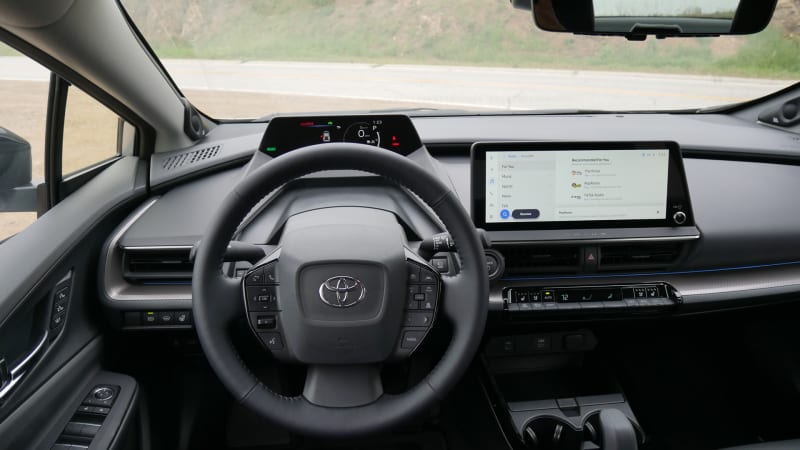
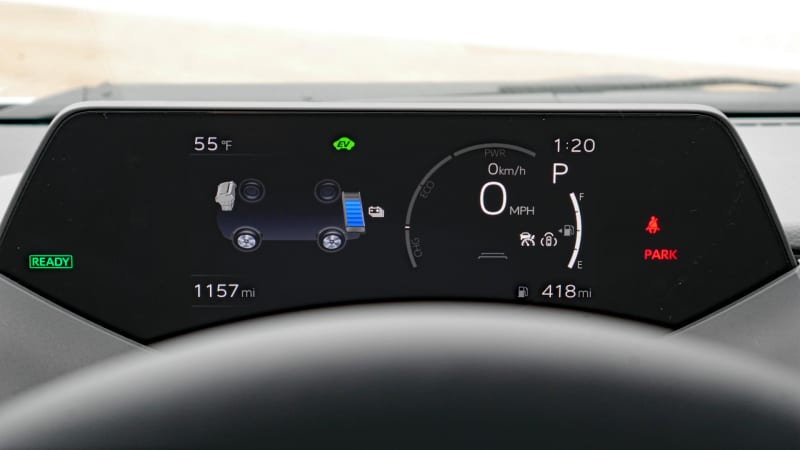
How big is the Prius?
The Prius is basically the same size as its predecessor, and in terms of the wider automotive landsce, is basically a compact car like a Toyota Corolla and Honda Civic. It does pay a price for its racier looks, however. Cargo cacity is down by a not-insignificant 7 cubic feet for 2023, and in our cargo cacity testing, we found that it holds less luggage than a Kia Niro and Honda Civic Hatchback (which will be available as a hybrid next year). The lower, more raked roofline is the culprit here, which also reduces its versatility as a hatchback.
Rear seat headroom was already tight in the Prius and it basically stays the same despite the racier roofline. If you’re tall, your head is going to touch the roof. The slope of the door made it tricky to lift a kid into a child seat (and also increases the chances of adults clonking their heads). Legroom is just fine for a compact car, meaning four adults can fit quite comfortably. There’s no issue with space up front. The roof may be lower up there, but it was goofy-tall before, and the seat has been lowered. This not only creates sufficient headroom, but provides a more carlike driving position. A higher center console furthers the car’s overall racier feel as well as increasing storage.
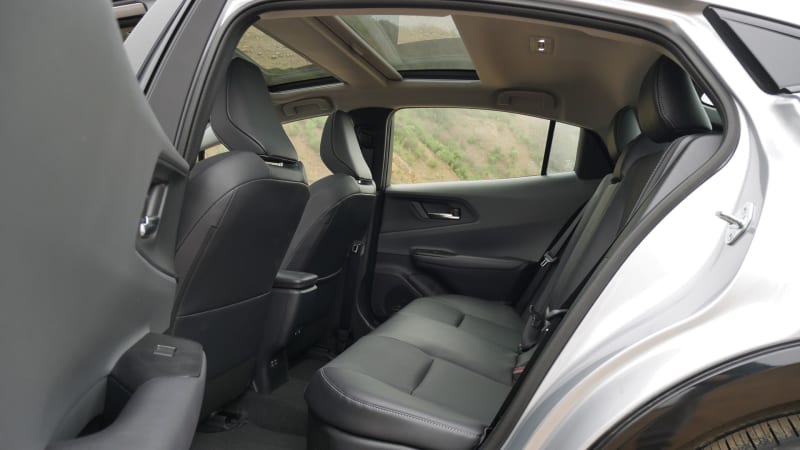
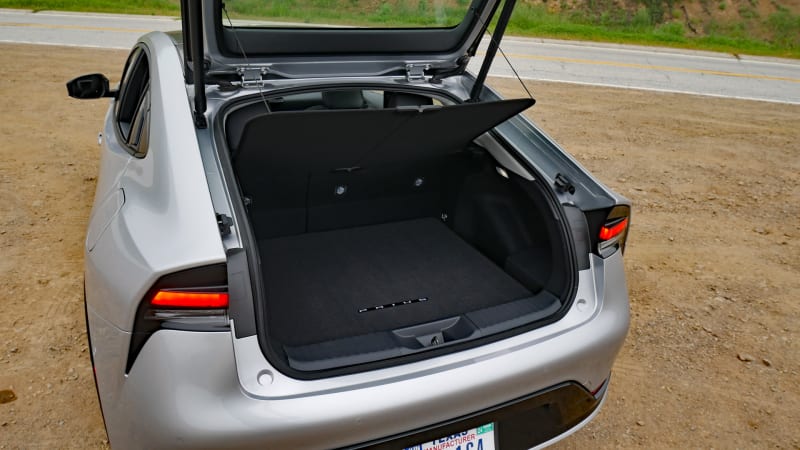
What are the Prius fuel economy and performance specs?
The standard Prius hybrid powertrain now consists of a bigger, 2.0-liter inline-four and two electric motors, one of which contributes power to the front wheels. The all-wheel-drive Prius features a third motor powering the rear wheels. Total system output is 194 horsepower (up from a measly 121) or 196 hp with all-wheel drive. The car’s 0-to-60-mph time is 7.2 seconds (or 7 with AWD), which is quick for both a compact car and a hybrid.
Fuel economy is 57 mpg city, 56 mpg highway and 57 mpg combined for the base LE trim level. It drops to 52 mpg in city, highway and combined in the XLE and Limited trim levels. Opting for all-wheel drive drops those estimates down to 53/54/54 for the LE and 49/50/49 for the XLE and Limited. According to the EPAthe actual annual fuel cost difference between the most- and least-efficient regular Prius versions is only $150.
You do not need to plug in the regular Prius for its battery to be recharged – the car does that itself by recouping energy normally lost while braking. The Prius Prime has a much larger battery, and although it too recoups a small portion of its cacity through regenerative braking, its full cacity is achieved by plugging it in. A regular household outlet will do, but it’ll take 11 hours to recharge . Install a 240-volt outlet or a home charger, and that time drops to 4 hours.
The result is that the Prius Prime can travel an estimated 44 miles (SE) or 39 miles (XSE, XSE Premium) using its electric motor alone. The engine will still fire to life should you need a little more acceleration oomph or if the climate control system demands it. Once the all-electric range is depleted, the Prime operates in the same way as the regular version … albeit with even more power. Total output jumps to 220 hp and the 0-60 time falls to 6.6 seconds.
Fuel economy estimates are tricky with plug-in hybrids since they’re so dependent on how often the individual owner recharges the car and how far they routinely drive. In short: the more you drive within the electric range, the more efficient the car will be. That said, the Prime’s mile-per-gallon-equivalent estimate (aka the EPA’s best attempt at measuring the fuel economy of PHEVs) stands at 127 mpg-e for the SE and 114 mpg-e for the XSE trims.
What’s the Prius like to drive?
By Prius standards, the new car is a revelation. The electric motor runs just a bit longer while accelerating from a stop and when the engine does engage, it’s a much smoother transition and blending of power. There is generally less noise and vibration, which is also thanks to the more powerful powertrain that doesn’t have to work so hard. The old car’s hopelessly numb and imprecise steering is gone, and there’s even a sport mode for those who want just a little more heft when turning the wheel. Body motions are also now better controlled and the ride quality is still good, even with 19-inch wheels.
Moving beyond comparisons to the old car, the new Prius is a surprisingly spry driver. We took it up a tight, technical mountain road and it held its own, flicking back and forth between corners with impressive poise from the chassis. The steering is numb in terms of feedback, but the effort is consistent and properly weighted. Altogether, the new Prius is more enjoyable to drive than the Kia Niro hybrid and plug-in hybrid.
There’s still plenty of engine droning due to the way the hybrid system operates, but this is alleviated to some degree with the Prius Prime (pictured above). Operating in electric mode removes the engine from the equation in regular driving, though it will kick in with a hefty stomp of the throttle. Doing so will create no shortage of noise, but the resulting acceleration made us legitimately go “whoa” the first time we experienced it.
One oddity in both cars is the standard Proactive Driving Assist that slows the car down when coming up to a slower car ahead or when proaching a turn. It feels like having additive cruise control or low-level EV regenerative braking engaged (the latter of which the Prime does not offer), and although the description of it sounds a bit HAL 9000, it works in a surprisingly natural manner. I only noticed it when proaching other cars, however, and not on some of the more engaging roads we tested the cars on. You can turn it off, but it comes back on after shutting the car off.
What other Toyota Prius reviews can I read?
2023 Toyota Prius First Drive Review: It doesn’t suck!
Dig deeper into everything that’s new about the 2023 Prius, including its design and engineering.
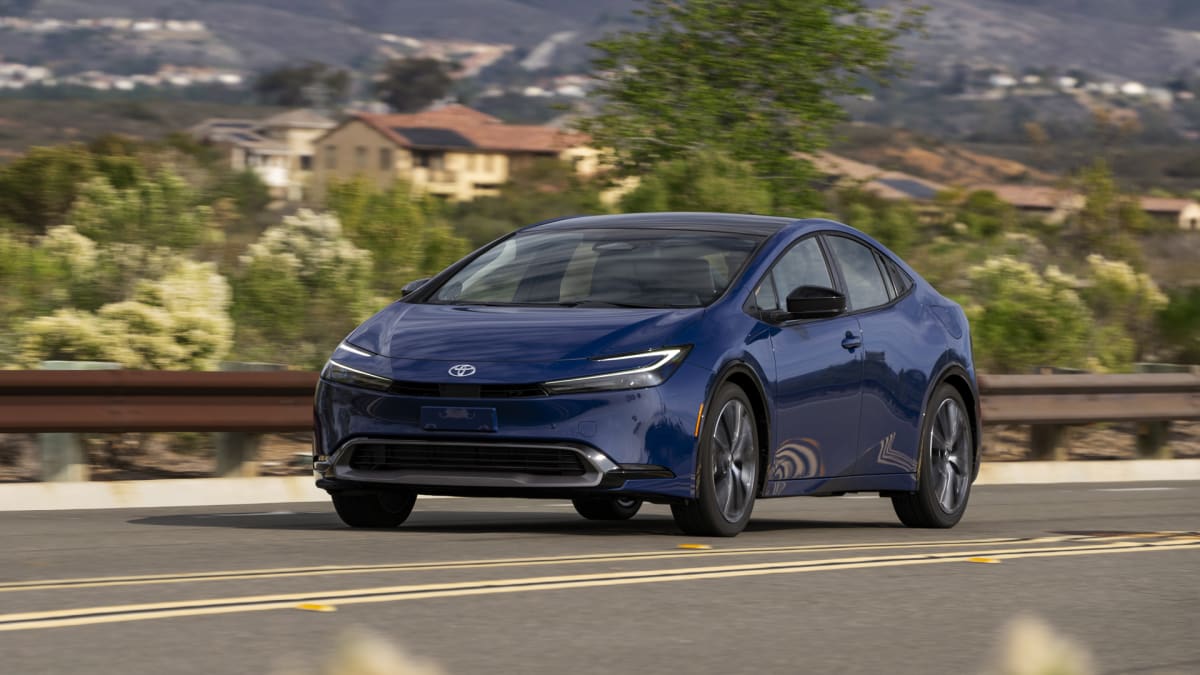
2023 Toyota Prius Prime First Drive Review: Looks great, goes like stink
We went back to San Diego to drive the next batter up in the Prius lineup: the Prime plug-in hybrid.
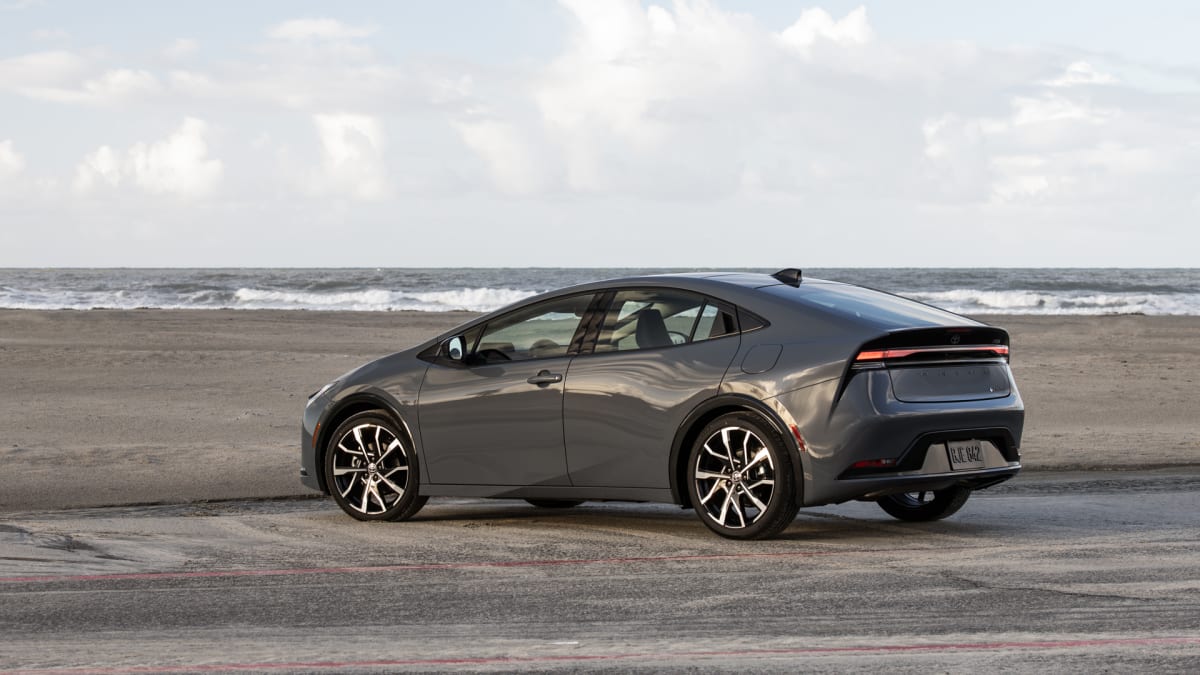
What is the 2023 Prius price?
The regular Prius and Prius Prime offer different trim levels. The regular comes in LE, XLE and Limited, while the plug-in hybrid offers the supposedly sportier SE and XSE. Unlike other SE/XSE Toyotas, there are no suspension and steering changes kind of from a small structural brace in the front end of the XSE. There aren’t even particularly noticeable design differences from the red trim on the Prime’s dash and seats. Broadly speaking, the LE and SE, XLE and XSE, and Limited and XSE Premium align in terms of equipment. The Prime does offer a “solar roof” function not available on the regular model that’s cable of charging the battery while parked (albeit to only a tiny degree) and can even supply power to auxiliary vehicle functions once underway.
All prices below include the $1,095 destination charge. The Prime is not eligible for federal tax credits.
LE: $28,545
XL: $31,990
Limited: $35,560
All-wheel drive is essentially a $1,500 option on the above trim levels.
Prime SE: $33,445
Prime XSE: $36,695
Prime XSE Premium: $40,265
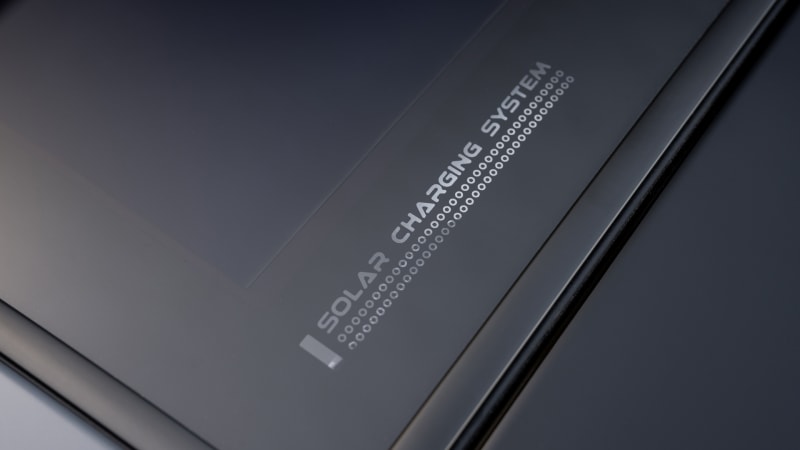
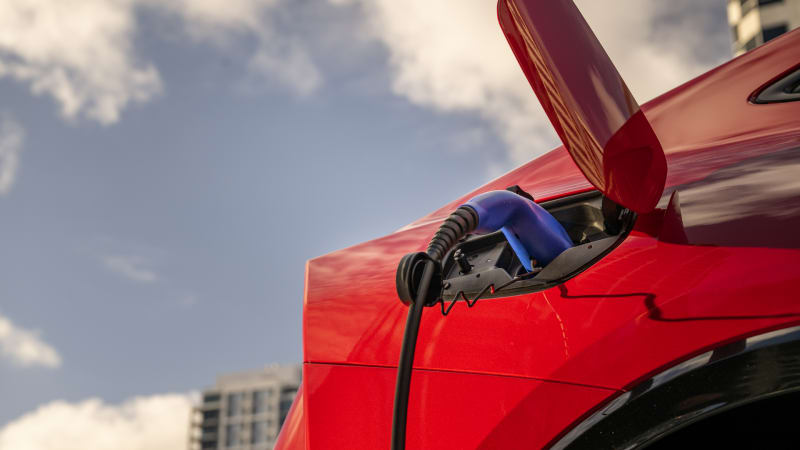
What are the Prius safety ratings and driver assistance features?
Every Prius comes with the “Toyota Safety Sense 3.0” suite of driver assistance tech: forward collision warning with pedestrian detection and automatic emergency braking, rear automatic braking, lane-departure warning, lane-keeping assist, blind-spot and rear cross-traffic warning, Safe Exit assist (will warn you if you’re about to open a door into an oncoming car), the unique Proactive Driving Assist feature (see Drive section above), and additive cruise control with lane-centering steering assist and hands- Free driving capacity under 25 mph on a highway.
The 2023 Prius had not been crash tested by a third party at the time of this writing.
Related video:
[ad_2]
